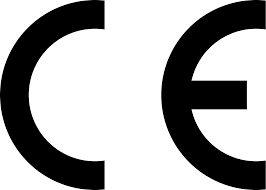You may have experienced difficulty as of late in obtaining necessary regulatory approvals for the European Union market. There are many reasons for this, notably a shrinking pool of available resources to perform work that is already contracted, and a simultaneous expansion in the volume and complexity of work required to support such approvals. This perfect storm in the regulatory world has led to delays and frustrations on the part of many manufacturers.
Mark Leimbeck will be speaking at the Remediation of Medical Device Quality Systems conference, March 7–8, 2017 in Washington, D.C. | Join the conference in-person or virtually | LEARN MOREIssue #1: Shrinking Pool of Available Resources.
Due to the PIP breast implant scandal and the subsequent “PIP Action Plan”, Notified Bodies were re-assessed by teams involving auditors from several member states and the European Commission. This resulted in the suspension and limitation of scope for various Notified Bodies concerned. Additionally, several Notified Bodies voluntarily terminated their services.
There are also increased expectations for Notified Body staff with respect to training and qualifications. Couple this with a lack of qualified people in the market to perform the required work, a longer and more complex process to train and qualify new staff, and there are far fewer people available to perform the work involved.
Issue #2: Ever-Increasing Workload
More recently, standards and regulatory requirements have placed an additional emphasis on risk analysis and clinical data, and the scope and sophistication of the assessment criteria have increased as well (i.e., human factors engineering, software and cybersecurity) with more to come (EMC and risk). This all translates to additional effort in the assessment and review process.
The outright volume of work has increased. Consider the requirements for unannounced audits and review of suppliers (additional fallout from the PIP breast implant scandal.) On the horizon, we have the new Medical Device Regulation (MDR) and In-Vitro Diagnostic Regulation (IVDR); the latter of which has expanded the scope of its coverage over many products for which the In-Vitro Diagnostic Directive (IVDD) had limited, if any, application. Note also that the new IVDR will have significant implications for legacy devices on the market today, which, we expect will require additional scrutiny (and effort to develop required documentation) to remain on the market in the future.
Finally, the reality is that the overall complexity of devices continues to increase. The old adage regarding increasing power and capability comes at a cost of increasing complexity is true. Once again, this translates to additional effort required to assess and maintain regulatory compliance and safety.
The Net Effect
This combination of fewer available competent and qualified staff to perform the increasing volume and complexity of work has had the predictable result of a decline in quality of service and customer satisfaction. It is important to remember there are resources available for those who are seeking an alternative Notified Body looking for improved service, or are among those served by a Notified Body that has undergone a reduction in scope or is simply no longer offering services.







